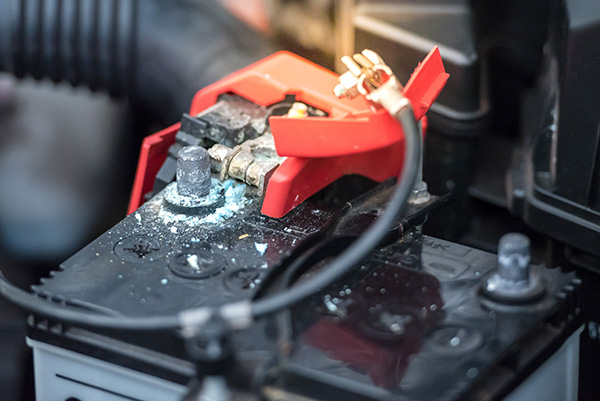
Car batteries are generally safe, but when something goes wrong, they can become a serious fire hazard. While rare, battery-related fires do happen, and they’re usually the result of preventable issues—like poor maintenance, damaged components, or electrical system failures. When a battery overheats, leaks, or sparks, it can ignite flammable gases or nearby materials under the hood, putting both your vehicle and your safety at risk.
Knowing what causes battery fires and how to reduce your risk is key to keeping your car reliable—and keeping you out of harm’s way.
Overcharging and Voltage Issues
A healthy battery charges at a controlled rate. But when the charging system malfunctions—typically due to a failing alternator or voltage regulator—it can push too much current into the battery. That overcharging heats the battery up and starts to break down the internal chemicals, which leads to gas buildup, swelling, and sometimes ruptures.
Modern vehicles are designed to regulate this process precisely. However, if a component fails or if the battery itself is damaged, those protections may no longer work as intended. Over time, this can lead to leaks, pressure buildup, and in the worst cases, fire.
Damaged Terminals or Loose Connections
Loose battery terminals or damaged cables are a common but often overlooked cause of electrical arcing. When a terminal connection isn’t snug, current can jump from one surface to another—creating small sparks that may go unnoticed until they start to melt cable insulation or ignite nearby fumes.
Even if a fire doesn’t start right away, the heat from arcing can damage the terminal, cause the battery to drain faster, and weaken nearby components. This is why it’s important to inspect your battery terminals regularly and clean off any corrosion that could interfere with contact.
When Internal Battery Damage Becomes Dangerous
A battery that has been dropped, exposed to impact, or installed improperly may have internal damage that isn’t visible on the outside. Here are a few signs and risks associated with internal battery failure:
- Swollen casing – This may mean the internal plates are overheating or the battery is overcharged.
- Rotten egg smell – Indicates hydrogen sulfide gas is leaking due to a chemical breakdown inside the battery.
- Leaking fluid – Corrosive acid can escape from cracks and damage nearby components or wiring.
- Hissing or popping sounds – A sign that gases are venting or the battery is under pressure.
If your battery shows any of these symptoms, it should be replaced immediately. Ignoring them could lead to overheating or combustion, especially in high-temperature environments or with continued electrical load.
Extreme Heat and Poor Ventilation
Hot summer days and long drives already heat up your engine bay—but if your car’s ventilation is poor or the battery is in a tight space without airflow, it can reach dangerous temperatures. When combined with an old or overworked battery, this heat buildup accelerates the breakdown of internal components and may even cause the battery to vent flammable gases.
Vehicles in states like Pennsylvania might not deal with the same summer extremes as the southwest, but all engines generate a lot of heat—and failing to control that heat around the battery can make things riskier than necessary.
If your battery is located near the firewall or surrounded by heat-generating parts, routine inspections are even more important. Making sure the heat shield is intact or airflow is unobstructed can help reduce the risk.
Using the Wrong Battery Type or Installation Errors
One of the simplest ways to increase your fire risk? Using the wrong battery for your vehicle. If the battery is too small, has the wrong terminals, or lacks the amperage your car requires, it can struggle to keep up with electrical demands. This creates resistance, heat, and in some cases, system strain that leads to failure.
Improper installation is another danger. If the battery isn’t secured tightly, it can vibrate or shift, damaging the housing or shorting against metal parts under the hood. That’s especially dangerous if the positive terminal makes contact with the body or hood, which can cause sparks and potentially start a fire on the spot.
Always use the battery type recommended by your vehicle’s manufacturer and ensure it’s installed correctly—tight terminals, proper orientation, and no room for movement.
Noticed a strange smell under the hood? Worried about battery performance or overheating? Bring your vehicle to Wayne Carl Garage in Royersford, PA, for a full electrical inspection. We’ll test your battery, check the charging system, and make sure every connection is secure and safe.